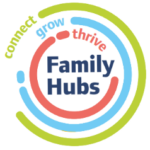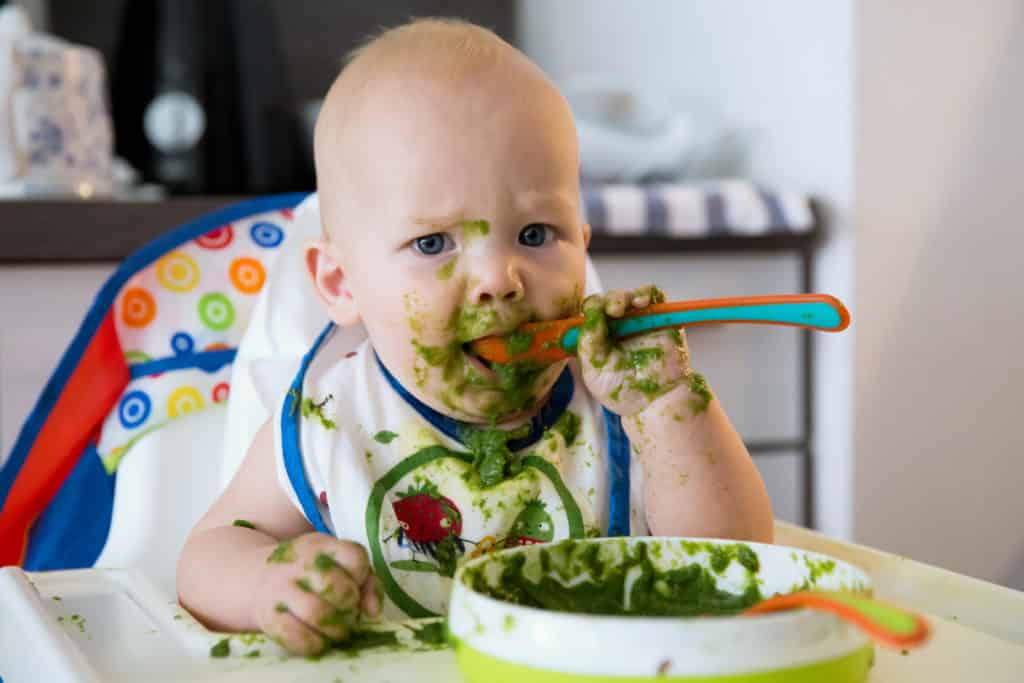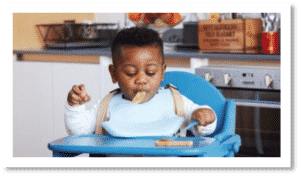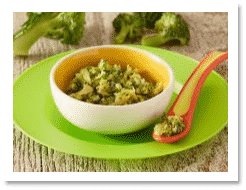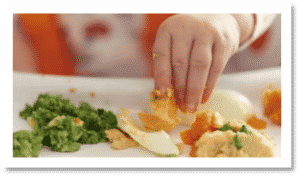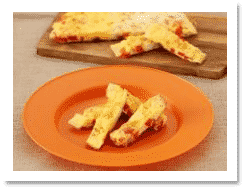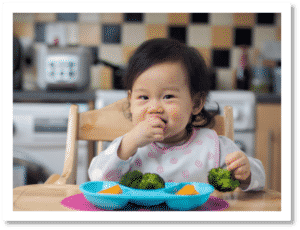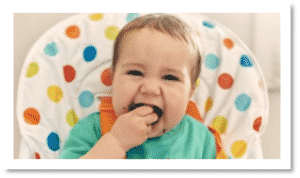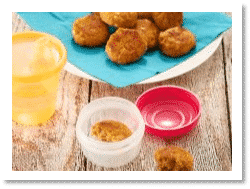Hello to all our families and carers.
My name is Donna I’m an Early Years Practitioner at Lewisham Children and Family Centres and one of the sessions we run is Starting Solids.
We have new sessions starting soon in our centres and online, see our timetable page for dates, but if you can’t get to a session we thought it may be helpful for parents and carers to have some tips on how to make the introduction to solids a success from the start, and share with you some of the topics, we cover at our session. Because there is so much information and advice on weaning, we have put together top tips and advice from the NHS/start4life website.
Introducing solid foods is a hugely exciting time for your baby’s learning and development, it’s a time of experimentation and fun for you both, as you introduce your baby to new foods, tastes and textures for the first time.
You may find that the floor, you and your baby all get sprayed with food, but that’s fine, you’re just getting started and it’s all part of your weaning journey together!
When should I start my baby on solid foods?
Introducing your baby to solid foods, sometimes called weaning or complementary feeding, should start when your baby is around 6 months old, as they need more than breast milk or first infant formula milk to meet their needs. At this stage they need solid foods as well, not as a replacement, but alongside their usual breast milk or first infant formula milk. (Babies under 4 months should not be given solid foods unless a health professional has said they should).
At the beginning it is not about how much your baby eats, but about introducing them to new textures, tastes and getting them use to solid foods and to the idea of eating and exploring new foods offered. They’ll still be getting most of their energy and nutrients from breast milk or first infant formula milk.
Three signs a baby is ready to start on solids – Weaning:
- They can sit up and hold their head steady.
- They can co-ordinate their eyes, hands and mouth, so they can look at food, pick it up and put in their mouth all by themselves.
- They can swallow food. Babies who are not ready will push food back out of their mouths with their tongue.
Signs that can be mistaken for a baby being ready for solid food are:
- Chewing their fists.
- Waking in the night, when they have previously slept through.
- Wanting extra milk feeds.
These are normal behaviours and not necessarily a sign of hunger or being ready to start solid food. Starting solid foods won’t make a baby any more likely to sleep through the night. Extra feeds are usually enough until they are ready for other foods.
What is the best time of day to start introducing solids to my baby, and how much should I give them?
When you do start introducing solid food ensure it is at a time of day that suits you both, when your baby is not too tired and when you have time and are not rushed. Start offering them food before their usual milk feed as they might not be interested if they’re full, but don’t wait until your baby’s too hungry. This can be at breakfast, lunch or teatime. To start with, your baby only needs a small amount of solid food, once a day, and how much they eat will depend on their appetite, follow your baby’s cues, go at their pace and stop when they show signs they have had enough. In the same way you follow your baby’s cues when offering them breast or bottle feeds, be responsive to your baby when giving them solid foods, and learn to recognise the signs and cues your baby shows when they’re hungry and when they’ve had enough.
Signs that your baby has had enough or is full can be:
- Pushing food or your hand away as you try to feed them.
- Closing their mouth or pressing their lips together when food is offered.
- Turning their head away from food.
- Using hand motions or making sounds to let you know they are full.
- Fidgeting or pushing up in their chair to try to get out.
- Throwing the spoon, bowl or food onto the floor
- Spitting food out.
Signs your baby is hungry can be:
- Reaches for or points to food.
- Opens their mouth when offered a spoon or food.
- Gets excited when they see the spoon or food, waving their arms and kicking their legs.
- They’re alert, sitting attentively in their high chair, head and body learning forward and towards the spoon, eyes wide open.
- They’re happy, smiling, laughing, making cooing sounds as you feed them.
- Licking their lips, drooling and opening their mouth.
- They’re engaged, trying to suck on their tongue, fingers, toes clothing.
- Uses hand motions or makes sounds to let you know they are still hungry.
Weaning safely and foods to offer
Start weaning using smooth texture or pureed foods, as they are easy for your baby to learn how to swallow, such as single vegetables and fruits. Try blended, mashed, or soft cooked sticks of parsnip, broccoli, potato, yam, sweet potato, carrot, apple or pear. You could also try baby rice mixed with your baby’s usual milk. Make sure any cooked food has cooled down before offering it to your baby.
Include fruits and vegetables that aren’t so sweet, such as broccoli, cauliflower, spinach and avocado, this will help your baby get used to a range of flavours, rather than just the sweeter ones like carrots, sweet potato, apples and pears. This can help prevent them being fussy eaters as they grow up.
To help your baby get used to different textures and tastes quickly, try moving on from purées or blended foods to mashed and finger foods as soon as they’re ready. This helps them learn how to chew, move solid food around their mouth and swallow. Give your baby a spoon to hold when they are eating and let them try feeding themselves. All babies are unique and take different amounts of time to get used to lumps in food, but it’s an important skill they need to learn. Just keep offering them lumpy textures from around 6 to 7 months, and stay with them so you can be sure they are swallowing it safely.
If you want to start soft finer food, make sure your baby is at least 6 months old.
Baby’s Gag reflex
If baby can’t manage something they eat, try not to worry too much, as their natural gag reflex will normally help them to cough it up or spit it out. A baby’s gag reflex is further forward in their mouth on the tip of their tongue, which is why they will sometimes gag when trying solid foods for the first time, at around 4-6 months their gag reflex moves to where an adults is at the back of their throat, but remember never leave a baby alone when they are eating
What is baby-led weaning?
Baby-led weaning means offering your baby only finger foods and letting them feed themselves from the start, rather than spoon feeding them puréed or mashed foods. You can offer a range of small, finger-sized pieces of food. Offer finger foods that are safe and easy for your baby to pick up and put to their mouth. This will vary depending on the age of your baby.
Babies, 6-8 months, generally use their whole hand to pick up food, closing their hand around a piece of food to hold it. Offer finger food that is cut up into pieces big enough for your baby to hold in their fist with a bit sticking out. Pieces about the size of your own finger work well. Start off with finger foods that break up easily in their mouth and are long enough for them to grip.
Babies, 8-9 months, are able to pick up smaller pieces of food, they have usually developed their pincer grasp at this age and use their thumb and forefinger to pick up food and feed themselves.
Some parents prefer baby-led weaning to spoon feeding, while others combine a bit of both. There’s no right or wrong way – the most important thing is that your baby eats a wide variety of food and gets all the nutrients they need.
It’s important to remember your baby is trying lots of different foods with different textures and tastes, it’s perfectly normal if your baby gives you that little look of disgust, pursed lips, a squint or they look like their sucking a lemon, these should not be taken as a sign of dislike. Instead it is simply the faces some babies make when introduced to new foods and tastes, not because they don’t like it. It may take your baby ten tries or more for them to get used to new foods, flavours and textures. There’ll be days when they eat more, days when they eat less, and days when they may reject everything. Don’t worry, this is perfectly normal, just be patient, keep offering a variety of foods, even the ones they don’t seem to like, and let them get used to it in their own time and pace.
Allergies
It’s important to introduce foods that can trigger allergic reactions one at a time, in very small amounts, so that you can spot any reaction. These foods can be introduced from around 6 months as part of your baby’s diet, just like any other foods: the following foods should be offered one at a time:
- Cows’ milk (in cooking or mixed with food)
- eggs (eggs without a red lion stamp should not be eaten raw or lightly cooked)
- foods that contain gluten, including wheat, barley and rye
- nuts and peanuts (serve them crushed or ground)
- seeds (serve them crushed or ground)
- soya
- shellfish (don’t serve raw or lightly cooked)
- fish
Once introduced and if tolerated, keep offering those foods as part of your baby’s usual diet (to minimise the risk of allergy). You can find more information on food allergies and what signs to look out for on the NHS website. www.nhs.uk/baby/weaning
Always speak to your GP or Health Visitor if your baby has any allergies to any food or food ingredients.
Foods to avoid giving to a baby:
- Sugar –can cause tooth decay, use fruit, breast or formula milk to sweeten food if needed.
- Salt – should never be added to a baby’s food it can cause high blood pressure, and isn’t good for their kidneys.
- Nuts – can cause choking. If no history of nut allergy in family nuts can be introduced once baby is 6 months old, as long as they are crushed or ground into peanut butter.
- Honey – occasionally honey contains bacteria that can produce toxins in a baby’s intestine, leading to infant botulism. Botulism attacks the nervous system, nerves, brain and spinal cord and can cause paralysis (muscle weakness) should never be given to a baby under 12 months
- Low fat foods – fat is an important source of calories and some vitamins for babies. Better to give babies and young children under 2 years full fat milk, yoghurt and cheese.
- Raw jelly cubes – can cause a choking hazard to babies.
- Saturated fat – do not give babies too much foods high in saturated fat, such as crisps, cakes and biscuits it can cause high cholesterol and heart attack.
- Raw or undercooked eggs – eggs can be given to babies over 6 months as long as the yolks and white are cooked until both are solid.
- Raw or cooked shellfish
- Shark, swordfish and marlin- as deep water fish may contain Mercury
- Strawberries, citrus fruits and juices –can be too acidic for babies under one year.
- soft cheeses — can contain a bacteria called listeria, these include:
Mould-ripened soft cheese, such as brie or camembert
Ripened goats’ milk cheese, such as chévre
Soft blue-veined cheese, such as roquefort
Unpasteurised cheeses: due to the risk of listeria. Check the labels to make sure you’re buying cheese made from pasteurised milk.
What milk to give babies and when:
0-6 Months
Babies only need breast or formula milk
Follow on formula isn’t suitable for babies under six months and doesn’t need to be introduced after six months.
Types of milk to avoid
Not all milk is suitable for feeding babies. You should never give the following types of milk to a baby under 1 year:
- condensed milk
- evaporated milk
- dried milk
- goats’ or sheep’s milk (but it’s fine to use them when cooking for your baby, as long as they are pasteurised)
- other types of drinks known as “milks”, such as soya, rice, oat or almond drinks
- cows’ milk as a drink (but it’s fine to use it in cooking)
Goat, sheep and cows milk are not suitable as a drink for babies under one year, as they do not contain the right balance of nutrients, but can be given when over one year as long as pasteurized.
Unsweetened calcium-fortified milk alternatives, such as Soya, almond and oat drinks can be given as part of a healthy balanced diet from the age of one year
Children under 5 years should not be given rice drinks, because of the levels of arsenic they contain.
If you baby or child is milk intolerant or has an allergy to milk speak to your GP, or health Visitor, who can advise on alternatives.
A general guide for feeds when weaning are:
- Bottle fed babies need around 500-600ml of milk a day.
- Breastfeeding babies feed on demand as well as offering food.
- 6-12 months stick to pre-weaning routine and baby will drop a feed when they are ready.
- When you start weaning, milk still remains the main source of nutrition for your baby.
Drinking cups for babies
If you’re bottle feeding, it’s a good idea to introduce a cup rather than a bottle from about six months. By the time your baby is one, they should have stopped using bottles with teats. Otherwise, they may find it hard to break the habit of comfort sucking on a bottle.
It’s important to choose the right kind of beaker or cup. A beaker with a free-flow lid (without a non-spill valve) is better as your baby doesn’t have to suck, and learns to drink properly. As soon as your child is ready encourage them to move from a lidded beaker to drinking from an open cup. You and your baby will find which cup or beaker best suits them, by the age of one year your baby should be drinking from an open cup.
Water
Fully breastfed babies don’t need any water until they’ve started eating solid foods. Bottle-fed babies may need some extra water in hot weather.
For babies under six months, use water from the mains tap in the kitchen. You will need to boil then cool the tap water, as it’s not sterile straight from the tap. Water for babies over six months doesn’t need to be boiled.
Can Babies Drink Bottled Water?
Babies over 6 months can have bottled water, but it should meet the following NHS requirements:
- The sodium or Na level should be less than 200mg per litre.
- The sulphate or SO or SO4 content shouldn’t be higher than 250mg per litre
- Select low-fluoride versions, most bottled water has an average of 0.11mg of fluoride per litre which is safe for babies over 6 months.
Like tap water, bottled water isn’t sterile, so it will need to be boiled before you use it to prepare feeds.
Useful first food and weaning websites
There are some great websites that can help you and your baby get off to a flying start with first Here are some of our favourites:
- https://www.nhs.uk/start4life/weaning/
- https://www.nhs.uk/start4life/weaning/recipes-and-meal-ideas/
- https://www.nhs.uk/conditions/pregnancy-and-baby/solid-foods-weaning/
- https://www.emmasdiary.co.uk/baby/starting-solids/weaning-advice
A PDF of this information can be downloaded here.

